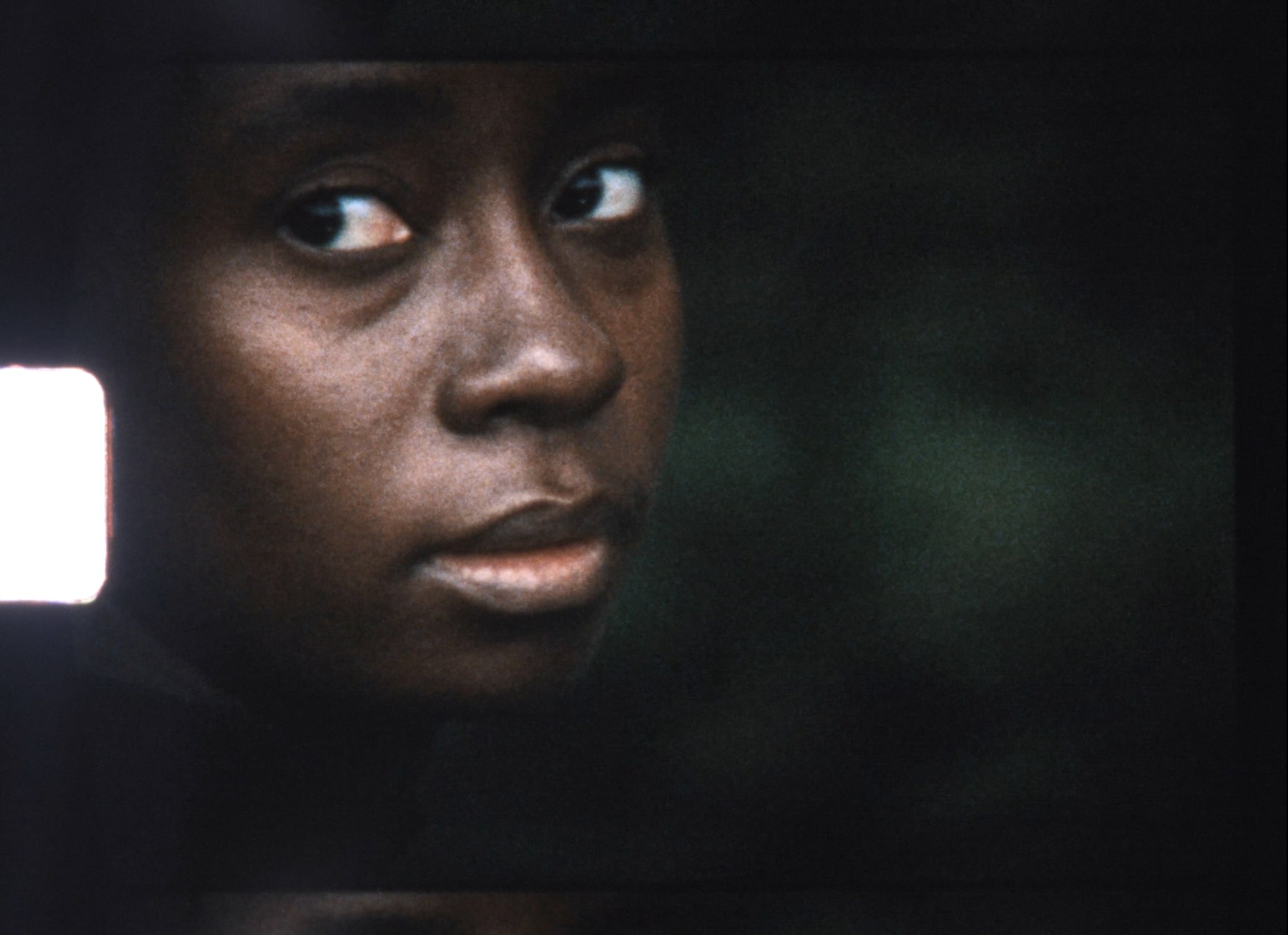


Curated by Ekow Eshun. Featuring artists Ayo Akingbade, Ufuoma Essi, Liz Gre, Evan Ifekoya, Liz Johnson Artur, Jade Montserrat, Emily Moore, Sola Olulode, Alexandria Smith, Rhea Storr and Alberta Whittle
What a sense of euphoria, to be able to go out to a gallery and see a new show. After this long, hard winter, the gradual reopening of life feels like a gift. Lisson Gallery’s new exhibition, curated by Ekow Eshun, provides a platform for artists who speak to the concerns that have dominated discourse in the art world since last summer.
Featuring eleven British based artists, spanning a number of generations, the exhibition opened in parallel with John Akomfrah’s in the space at 52 Bell Street. Through Akomfrah, An Infinity of Traces makes a conscious connection with the Black British Art movement of the early 1980s and many of the artists here have taken influence directly from Akomfrah’s recognisable techniques. More than half of the artists are showing moving image, on monitors and large-scale projections. The booking system makes the viewing conditions ideal and the show is airily installed.
Jade Montserrat’s series of text drawings lead the viewer into the space and announce themes that recur in several other artists’ works. Taming her hair, ironing out, disobedience, 2017, and Bleach herself white by rubbing herself all over with lemons, 2017 address the racist history of control of the black body, as well as the aggressively normative structures of white culture.
For many of the artists here, the rejection of these forms of control, the political position taken in opposition is a powerfully embodied one. Music and dance, as cultural agents, also allow Evan Ifekoya to create a space for the non-binary body: “I wanna be dancing at the discotheque. Dance is all I wanna do,” is the voice-over to the video of the artist dancing – “Dance so close I can feel you sweat” - over archival footage of a crowded club.
Ayo Akimbade’s video Tower XYZ, 2016 begins with a sequence that sends a chill down the spine, referencing the ‘watermelon smile” phrase in a 2002 column for The Telegraph that came back to haunt Boris Johnson recently. The work goes on to feature a trio of young women and recognisable London neighbourhoods, with a rapping voice-over that expresses hope and determination: “Let’s get rid of the ghetto. I hope I don’t die for a long time. I still got things I want to do and look at and boys to talk to. I wanna see an African spirit or like sleep on top of a volcano.” It made me think of Sarah Gavron’s brilliant Netflix film Rocks, and also how rarely one hears the voices of young Black women.
Alberta Whittle will be representing Scotland at the Venice Biennale next year and before then will be showing at the Liverpool Biennial, Glasgow International and Art Night. Based between Barbados and Scotland, Whittle’s work is rooted in the history of the transatlantic slave trade, defying the West to forget this shameful history. Her sweeping, 40-minute long film, Between a whisper and a cry, 2019 was commissioned for the Margaret Tait Award. It employs footage shot in Barbados, as well as archive footage and animation. Viewers sit on garden chairs looped around with gigantic, marine chains.
The sea is the repeat motif: whether a roiling, stormy grey expressed as digital animation, or a foamy beach on which characters wrestle with a brilliant blue tarpaulin as it whips and cracks in the wind. This last scene is mesmerising – the tarpaulin a constantly shifting sculptural form in space, alternately wrapping itself around bodies and whipping away again. Again, there is the embodiment of oppositional positions: in another scene the non-verbal “kissing teeth” gesture – at once aggressive and dismissive.
Liz Johnson Artur, who had a such memorable show at the South London Gallery in 2019 and is one of the older artists here, is present with three large-scale prints of photographs from her archive. Having photographed in London for several decades, Johnson Artur is more interested in the human, the political comes unbidden: “You know I never push my work out, and one of the reasons is because as soon as it goes out, I have to explain “Black”, which is really not what I was thinking about when I was taking the photographs.”
Brixton-based British Nigerian artist Sola Olulode is represented here with a group of paintings of lovers – their saturated colours and exalted intimacy inevitably recalling Chris Ofili. Olulode describes her work as creating a space for the embodiment of queer Black women, defying stereotyping and expressing the realities of romantic love. Her canvasses are complex with sensuous surfaces created with indigo, wax, pigment, ink, oil and charcoal; A walk with you on a warm summer’s night, 2019 was a particular favourite.
If you have yet to get out to see shows, this is an excellent place to ‘break your fast’. It is timely and necessary to see so many younger artists expressing their realities and taking strong political positions; to see them brought together in this way makes an even greater impact.
Caroline Douglas
Director
Lisson Gallery, 29 Bell Street, London NW1 6RU. Open by appointment Tuesday-Saturday 11.00-18.00. Exhibition continues until 5 June 2021. www.joshlilleygallery.com